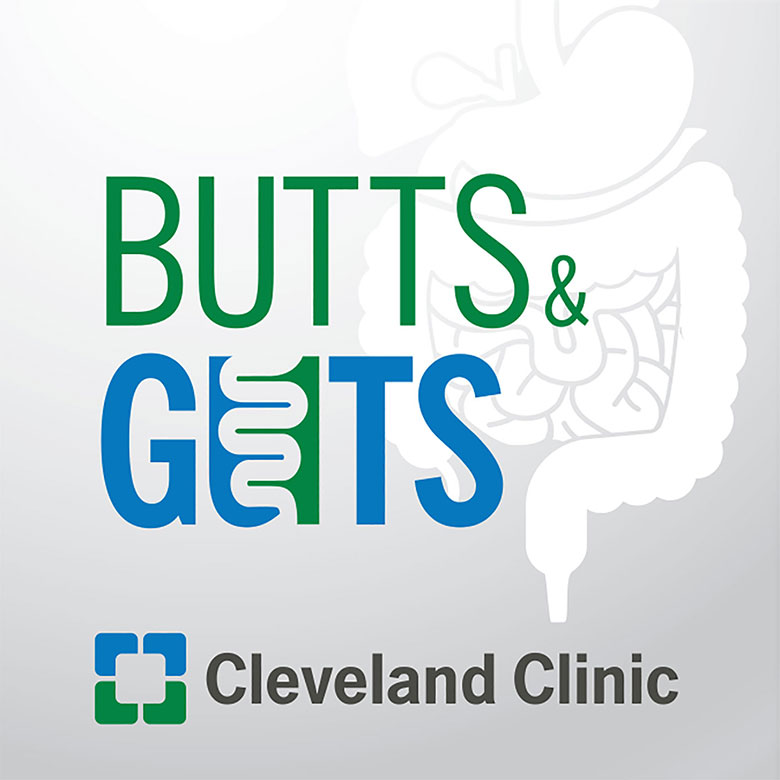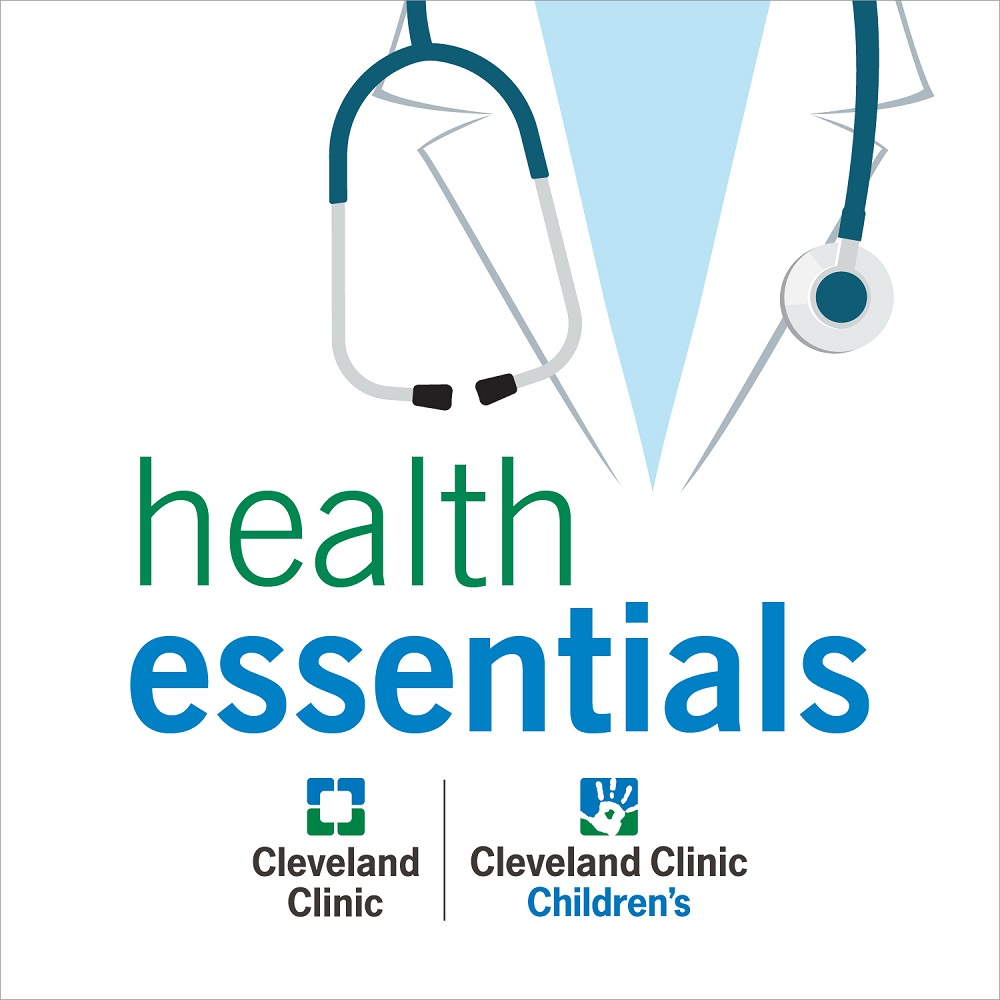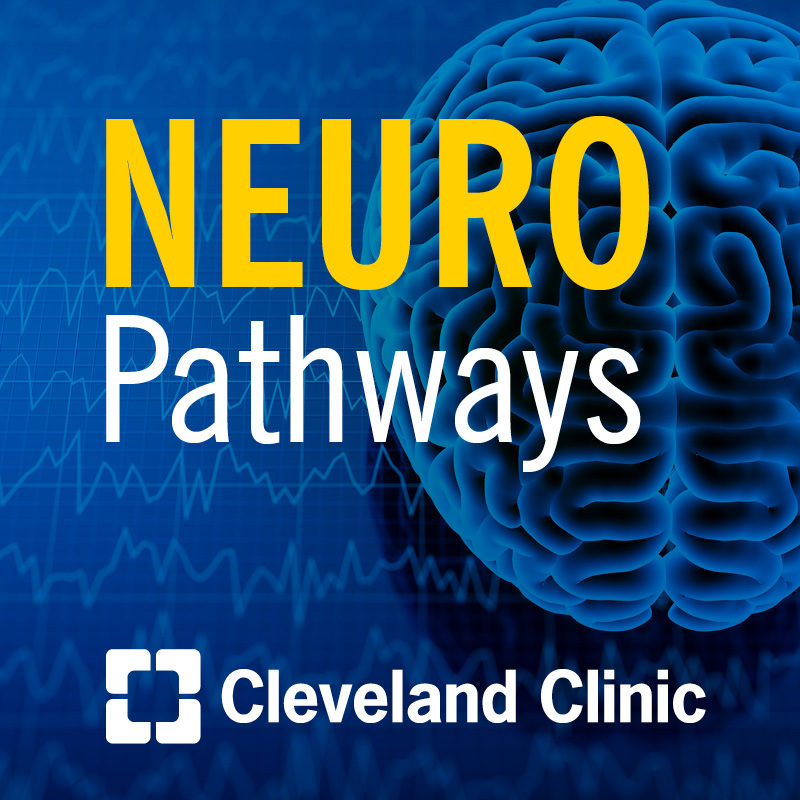Understanding Barrett's Esophagus

Cleveland Clinic Florida gastroenterologist, Dr. Roberto Gonzalez, joins the Butts & Guts podcast to explore Barrett's Esophagus, a condition where chronic acid reflux causes changes to the esophageal lining that can increase cancer risk. Listen in as he discusses the warning signs, why early detection matters, and the latest treatment options that can help patients manage this condition effectively.
Subscribe: Apple Podcasts | Podcast Addict | Spotify | Buzzsprout
Understanding Barrett's Esophagus
Podcast Transcript
Dr. Scott Steele: Butts & Guts, a Cleveland Clinic podcast exploring your digestive and surgical health from end-to-end. Hi again, everyone, and welcome to another episode of Butts & Guts. I'm your host, Scott Steele, the President of Main Campus and colorectal surgeon here at the Cleveland Clinic in beautiful Cleveland, Ohio. Today, I'm very pleased to welcome a first-time guest to our show here, Dr. Roberto Gonzalez, who is the Director of Advanced Endoscopy at Tradition Hospital and a gastroenterologist at the Digestive Disease Institute in Cleveland Clinic, Florida. Dr. Gonzalez, welcome to Butts & Guts.
Dr. Roberto Gonzalez: Thank you. Thank you for having me.
Dr. Scott Steele: For our listeners out there, we always want to start with a little bit of background about you. Where are you from, where'd you train, and how did it come to the point that you're at the Cleveland Clinic?
Dr. Roberto Gonzalez: I'm originally from New York, moved to Florida as a teenager, and then did most of my training after medical school at Florida State University in New York City. I trained internal medicine at Cornell in New York City and general gastroenterology at Beth Israel Medical Center, also in New York. For my advanced optional year, I trained up at Montefiore, which is in the Bronx, where we learned the advanced skills in endoscopy. After that, I've spent the last 10 years or so in private practice in Miami as an advanced endoscopist and general gastroenterologist, and just last year, late last year, I joined the family at Cleveland Clinic here in Florida.
Dr. Scott Steele: Well, we are so excited to have you. Today, we are talking about Barrett's esophagus, something we haven't really talked a whole lot about here on Butts & Guts. To start, can you touch on what is Barrett's esophagus for our listeners, and how exactly does it develop from chronic reflux disease or acid reflux?
Dr. Roberto Gonzalez: Sure. As you mentioned, it is a condition that is caused by chronic acid reflux. What Barrett's esophagus is is a change in the cells, in the tissue of the mucosa at the bottom of the esophagus, right before the esophagus turns into the stomach. The esophagus itself is not used to being exposed to high levels of acidity like the stomach is, so that exposure from acid reflux to the esophagus ends up causing inflammation to the cells and the mucosa of the bottom of the esophagus. Over time, that inflammation may become a change in the cells of the esophagus. It's almost as if the esophagus is saying to itself, "The way we look right now, we cannot handle this acid level, so we want to start looking more like stomach cells." What happens that is in that change, there may be some precancerous changes that occur, and that's what Barrett's esophagus is.
Dr. Scott Steele: Many people have, we call it GERD, gastroesophageal reflux disease, acid reflux, lots of different eponyms out there, but they don't develop Barrett's esophagus. What are the key risk factors that maybe make some individuals a little bit more susceptible? Is it genetics, lifestyle, demographic patterns? What do we need to know about?
Dr. Roberto Gonzalez: Definitely, chronic heartburn symptoms or chronic, like you mentioned, GERD, acid refluxes, is a precursor to this, but there are other factors that are involved. One of them is going to be the presence of a hiatal hernia, which is actually a very common finding in patients who have heartburn. It basically means that the first few centimeters of the stomach is protruding up through the diaphragm and into the chest cavity. This weakens the muscles at the bottom of the esophagus and allows for more acid reflux. That's a condition that's usually found in an upper endoscopy that's performed when a patient has history or symptoms of heartburn.
There are other factors, and I think it's five of them if I'm not mistaken. Let's see, let's go through them. One is Caucasian background. White people tend to have a higher incidence of Barrett's esophagus when they have heartburn, being a male is more likely to have Barrett's esophagus than women, over the age of 55, history of smoking, and actually, speaking of possible genetic reasons, we see that there may be an increased risk of Barrett's esophagus in those who have a family history of esophageal cancer.
Dr. Scott Steele: Truth or myth. Truth or myth, you won't get Barrett's esophagus if your acid reflux is well-controlled?
Dr. Roberto Gonzalez: I'm going to say that's a myth. There is such a thing as silent reflux. We don't always feel every time acid leaves our stomach and transfers up to our esophagus, so even though we may feel okay, sometimes we can still be getting chronic damage of the lower esophagus which can lead to changes of Barrett's esophagus.
Dr. Scott Steele: Barrett's esophagus is sometimes called this silent condition that you talked about, silent reflux disease, because patients may not have any symptoms associated with, so how is it exactly that physicians like yourself discover or diagnose it and is there a way to screen for this? If so, how often?
Dr. Roberto Gonzalez: The usual way that we find Barrett's esophagus is when patients come to us complaining of symptoms of heartburn that are not responding to medications such as antacids. At that point is when we may decide to perform an upper endoscopy, which is a procedure done under sedation in order to look into your esophagus and stomach using a long camera, and by directly visualizing the bottom of the main esophagus is where we may see some of the changes of Barrett's esophagus. That's the most classic way to screen for the condition. Depending on what we see, and we also take biopsies at the time of the endoscopy, so depending on what we see with the camera and what we see under the microscope will determine how often you may want to have an endoscopy. Minimum, someone with Barrett's esophagus, they should have an endoscopy every five years.
Some of the changes we're looking for under the microscope would be changes that are considered precancerous, and depending on how severe those changes are, it may be every three years, it may be sometimes yearly. There are other ways that are still not widely used, but there are other ways that we can screen or do surveillance for Barrett's esophagus, such as swallowing a little sponge that's on a string that goes down to the bottom of the esophagus. We leave it there for about eight to 10 minutes, and when we pull that sponge up out of your mouth, some of the cells from the bottom of the esophagus will stick to the sponge, and we can look for those changes that way. But for now, the most common way is going to be upper endoscopy.
Dr. Scott Steele: But just to be clear, unlike, for example, colorectal cancer, where you can have absolutely no symptoms, no heartburn, no anything, you get recommendations for screening, you're not recommending that patients just every five years get an upper scope and look for Barrett's, right? It's somebody that has to have a little bit of some symptoms or some history.
Dr. Roberto Gonzalez: Let me clarify that then. Once Barrett's is found, once you have findings of Barrett's esophagus, then at that point, there are recommendations to state that an endoscopy should performed at least every five years. Not everyone in the general population, just because you have heartburn, should have an endoscopy every five years.
Dr. Scott Steele: Fantastic. You mentioned a little bit about having this reflux disease, but does the Barrett's disease itself, does it cause signs and symptoms?
Dr. Roberto Gonzalez: In the early stages, no, it does not. The changes are usually microscopic, so they're not going to cause symptoms such as trouble swallowing and those things. When you start to have symptoms from Barrett's esophagus, and some of the common ones may be painful swallowing or trouble swallowing, we're concerned that now you might have evidence of advanced Barrett's esophagus or the unfortunate complication of Barrett's esophagus, which would be changes of those cells to become a cancer of the esophagus.
Dr. Scott Steele: Let's dig a little bit in there. Can you talk about the cancer risk associated with Barrett's esophagus, and what is that actual likelihood or the condition leading to esophageal cancer?
Dr. Roberto Gonzalez: The good news about Barrett's esophagus and the risk for cancer is that it's actually a very low risk of conversion from signs of precancerous changes to cancerous changes, but it's still high enough that warrants surveillance, as I mentioned, at least every five years.
Dr. Scott Steele: Once a patient is diagnosed with Barrett's, you mentioned that they need a scope about every five years. Is there ever a time where it's more often than that that they might need it every year, or six months, or every three years, and what do you exactly is a doctor looking for when you do that scope?
Dr. Roberto Gonzalez: That's a great question. When we do the endoscopy, we also take biopsies, and what we're looking for are changes that are not just those changes I mentioned to look more like the stomach. We're looking for changes of the cells that may be worrisome, that if we leave them alone, they may become cancer in the future. Those changes are called dysplasia, is the word that we're looking for there. If we see signs of dysplasia, now it changes from a surveillance pattern, where you get an endoscopy every so often, to actually to try and treat the cells that are precancerous. We do that by performing therapy on the area of abnormality at the bottom of the esophagus, either by burning the tissue during an endoscopy, sometimes we can freeze the tissue. The idea behind doing these treatments is that we kill off the cells that are precancerous and then your esophagus will then grow back normal tissue.
Dr. Scott Steele: Can Barrett's be treated with maybe traditional over-the-counter antacid medications?
Dr. Roberto Gonzalez: There are studies that show that being on long-term antacid medications, specifically those called proton pump inhibitors, can actually show decrease in the progression of Barrett's esophagus to precancerous changes. On patients who have the evidence of Barrett's esophagus without the precancerous changes, without that dysplasia that we see on biopsies, we actually recommend that the patient remain on long-term antacids because we can see that slowing of progression. Furthermore, in those who get treated with the antacids, we may even sometimes see a reduction in the cells of Barrett's esophagus.
Dr. Scott Steele: Let's just say it doesn't respond to antacids, can you talk a little bit about the other treatment options that are available for Barrett's and maybe a little bit about the ablation, or cryotherapy, or any other ablative techniques that are out there?
Dr. Roberto Gonzalez: Once we find those dysplasia changes, dysplastic changes that are precancerous, then the treatment is going to be an endoscopy where we have little catheters that go through the scope and we literally burn the tissue superficially on the inside of the esophagus. We do that periodically about every two to three months until we biopsy and notice that the Barrett's esophagus is no longer present. At that point, the patient can then go back to their normal surveillance pattern of endoscopies and making sure that the cells don't come back. The other options, as I mentioned one of the risk factors for Barrett's esophagus or one of the risk factors that increases your risk of heartburn, is having the hiatal hernia or the small hernia through the diaphragm.
There are some surgical procedures to try and fix the hiatal hernia in order to decrease the chance of having long-term heartburn so that Barrett's may not form. The other thing that may be done, and this is done by a surgeon, is that there are some devices that can be surgically implanted around the bottom of the esophagus that's almost like a metal chain that helps keep the lower esophagus sealed. Not sealed, I would say tighter at the bottom so there's less chance of acid reflux occurring up into the esophagus. Those are some of the other things that can be done.
Dr. Scott Steele: You mentioned some of these kind of endoscopic procedures, but are there surgical options for Barrett's esophagus, and really, when should those be considered?
Dr. Roberto Gonzalez: The best way and the first way to treat the changes of precancerous changes seen in Barrett's esophagus is going to be through the endoscope. However, when you get very advanced changes of precancer, or sometimes early stages of cancer from the Barrett's esophagus, there are ways to remove small areas, small focuses of early cancer, also done by endoscopy. But when those foci get too big, those areas are too big, that's when we have to rely on our surgical colleagues to discuss with the patient the idea of removing the lower portion of the esophagus, which was much more involved than any endoscopy that we would perform.
Dr. Scott Steele: It's like a lot of things out there. There's a certain role of nutrition or even lifestyle changes that can help manage some of these conditions. Can you speak to any of that with regards to Barrett's?
Dr. Roberto Gonzalez: Yeah, absolutely. I think it follows the same idea as dietary and lifestyle modifications for those who have simple heartburn. The first thing that we always talk about is the GERD diet. The GERD diet is going to be something you can easily Google and find online. It'll tell you about foods that should be avoided in order to prevent symptoms of heartburn. Very common foods are going to be those that contain tomato sauce, things that are spicy, things that are fried, chocolate, onion, garlic, coffee, alcohol, carbonated beverages. Of course, all the things that we all love to have, but avoiding those things can help decrease the risk of heartburn and maybe prevent the formation of Barrett's esophagus.
More so than what we eat, we have to think about how we eat. A lot of us with busy lifestyles, maybe like ourselves, we are busy all day and then only get to eat one large meal at night. The idea of eating one large meal at night may lead to more acid reflux because you're filling your stomach, not to mention you're leaving your stomach empty with only acid all day long, so we always recommend more frequent, smaller meals throughout the day instead of one or two large meals. For those who have nighttime symptoms of heartburn, we always recommend at least three to four hours between the last meal of the day and lying flat to go to bed.
Dr. Scott Steele: Fantastic. Take a look into the future, are there any advancements on the horizon when it comes to the diagnosis or the treatment of Barrett's esophagus?
Dr. Roberto Gonzalez: There are other ways to look at the cells without biopsy. There are some what we call confocal microscopy to look at the cells in the esophagus without actually having to biopsy them. Again, these are things that are usually reserved to academic centers. They're not going to be found in your communities. But for right now, I think that the way we do things with surveillance, the way that we treat it, is quite effective. I am looking forward to the use more of the sponge that I mentioned, because that will allow surveillance to those who don't have access to endoscopy or those who can't afford the endoscopy, and it's much less invasive, which would be better for the patient as well.
Dr. Scott Steele: Fantastic. Now it's time for our quick hitters, a chance to get to know you just a little bit better. First of all, what's your favorite food?
Dr. Roberto Gonzalez: Italian food, for sure.
Dr. Scott Steele: What is your favorite sport to play and to watch?
Dr. Roberto Gonzalez: My favorite sport to play is golf, and I think my favorite sport to watch is football.
Dr. Scott Steele: If you could have a super power, what would that be?
Dr. Roberto Gonzalez: Reading people's minds.
Dr. Scott Steele: I don't know if I'd like that one. Finally, if you could go back to your 17, 18-year-old self graduating high school, what piece of advice would you give that person?
Dr. Roberto Gonzalez: Oh, man. Work diligently. Work diligently. It pays off in the end.
Dr. Scott Steele: I love it. I love it. Give us a final take-home message for our listeners regarding Barrett's Esophagus.
Dr. Roberto Gonzalez: The most important thing is to try and prevent, prevent, prevent. If you have symptoms of heartburn, lifestyle changes, dietary changes, and if those things don't work, come to see a physician early on so that we can get a control of your symptoms maybe with medications. It's better to prevent than it is to treat.
Dr. Scott Steele: Excellent piece of advice. For more information on the Digestive Disease Institute at Cleveland Clinic Florida, please call 877.463.2010. That's 877.463.2010. You can also visit clevelandclinicflorida.org/digestive for more information. That's clevelandclinicflorida.org/digestive. Roberto, thanks so much for joining us here on Butts & Guts.
Dr. Roberto Gonzalez: Thank you for letting me be a part of it.
Dr. Scott Steele: That wraps things up here at Cleveland Clinic. Until next time, thanks for listening to Butts & Guts.



